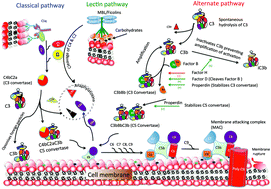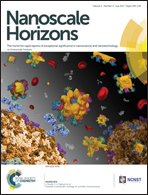Interactions of the innate immune system with carbon nanotubes
Abstract
The therapeutic application of nanomaterials requires that they are biocompatible and can reach the desired target. The innate immune system is likely to be the first defence machinery that would recognise the nanomaterials as ‘non-self’. A number of studies have addressed the issue of how carbon nanotubes (CNTs) interact with phagocytic cells and their surface receptors that can impact on their intracellular processing and subsequent immune response. In addition, soluble innate immune factors also get involved in the recognition and clearance of CNTs. The interaction of CNTs with the complement system, the most potent and versatile innate immune mechanism, has shed interesting light on how complement activation on the surface of CNTs can modulate their phagocytosis and effector cytokine response. The charge or altered molecular pattern on the surface of CNTs due to functionalization and derivatization can also dictate the level of complement activation and subsequent inflammatory response. It is becoming evident that complement deposition may facilitate phagocytic uptake of CNTs through receptor routes that leads to dampening of pro-inflammatory response by complement–receptor bearing macrophages and B cells. Thus, recombinant complement regulators decorated on the CNT surface can constructively influence the therapeutic strategies involving CNTs and other nanoparticles.

- This article is part of the themed collection: Recent Review Articles


 Please wait while we load your content...
Please wait while we load your content...